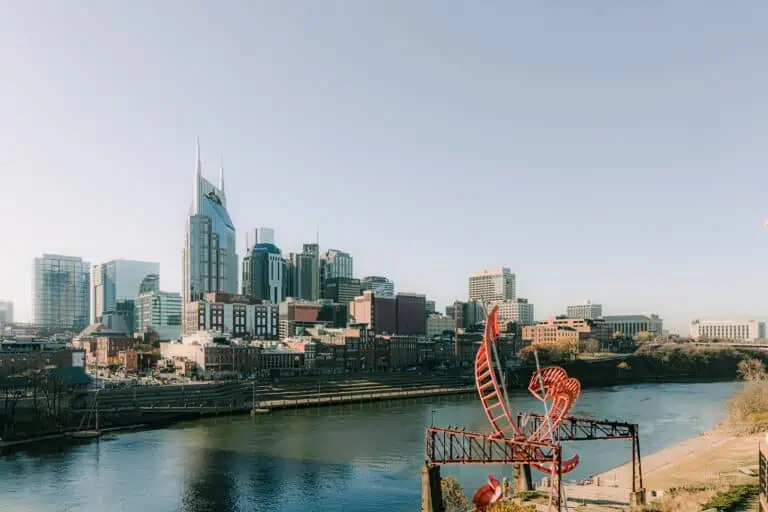17 Worldwide Festivals To Add To Your Bucket List
Today we bring you a glorious collection of worldwide festivals to add to your bucket list.
Festivals have been part of life and culture dating back thousands of years. As such, they vary across different cultures and regions and have been an integral part of human civilization, serving as occasions for celebrations, religious or spiritual observances, and social gatherings.
In the 20th century, music festivals gained popularity as large-scale events where musicians and fans gathered to enjoy live performances. Historically, influential festivals include Woodstock in 1969, symbolizing the counterculture movement, and the Isle of Wight Festival in the UK in 1968.
The Growth of Worldwide Festivals
The word “festival” originates from the Latin word “Festivus,” meaning “joyous” or “festive.” The following festivals and events have brought much joy to millions of audiences worldwide.
Today, there are plenty of festivals to choose from. They cover different genres, from Food Festivals to Arts Festivals, and attract audiences worldwide.
According to Statista, the global festival industry is worth an estimated $33.83 billion in 2023 and projected to reach $39 billion by 2027. Various elements, such as the surge in music tourism, the growing appeal of musicians and artists, and the escalating desire for live entertainment, fuel the expansion of the festival industry.
Worldwide Festivals Not To Miss
1. Carnaval (Brazil)
Carnaval in Brazil is a world-renowned festival celebrated in major Brazilian cities such as Rio de Janeiro, São Paulo, Salvador, and Recife. Known for its vibrant and colorful festivities, the festival occurs before Lent, usually in February or early March.
The highlight of Carnaval is the samba parade, where samba schools compete with elaborate floats, costumes, and choreography. The competition takes place in the Sambadrome, a dedicated venue for the event.
In addition to the parade, Carnaval features street parties called “blocos,” where people gather to dance, sing, and enjoy live music. The festival is a time of joy, energy, and celebration, showcasing Brazil’s rich culture. It attracts millions of participants and tourists worldwide.
2. Holi (India)
Holi is a famous and joyful festival in India known as the “Festival of Colors” or the “Festival of Love.” Celebrated in March, it marks the arrival of spring. The festival involves throwing and applying colored powders and water over each other. It aims to break down barriers, and the festival symbolizes unity and forgiveness.
People of various backgrounds celebrate Holi, promoting togetherness and the spirit of joy. It includes rituals like the Holika bonfire and is a time for music, dancing, and enjoying traditional sweets. Holi has also gained recognition and celebration beyond India, with communities worldwide organizing colorful festivities.
3. Day of The Dead (Mexico)
Day of the Dead, or Día de los Muertos, is a multi-day celebration in Mexico from October 31st to November 2nd. It’s a joyful and colorful holiday where families honor and remember their deceased loved ones.
Festivities include the creation of altars adorned with offerings, such as favorite foods and drinks of the departed. People decorate graves with flowers – particularly marigolds – paint their faces as skulls, and wear skeleton costumes. Public celebrations feature parades, music, and traditional dances. The Day of the Dead showcases Mexico’s rich cultural heritage, recognized as an essential local and international tradition.
4. Burning Man (Nevada, USA)
Burning Man is an annual cultural event in the Black Rock Desert of Nevada, USA. It takes place for a week, starting on the last Monday in August. It’s important to note that event dates and details may vary each year.
Participants create a temporary city called Black Rock City, following inclusion, self-reliance, and communal effort principles. The event showcases large-scale art installations, encourages unique fashion and self-expression, and fosters community and self-discovery. Burning Man has inspired similar regional events globally.
5. Oktoberfest (Germany)
Held annually in Munich, Germany, Oktoberfest beer festival spans 16 to 18 days, starting in late September and extending into early October. It attracts over 6 million visitors annually, who consume millions of liters of beer.
The festival features large beer tents where breweries serve Oktoberfest beer alongside traditional Bavarian food. It includes amusement rides, games, parades, and cultural displays. Visitors often dress in traditional Bavarian attire.
Oktoberfest is a significant cultural event in Germany and attracts international tourists. You will find similar beer festivals inspired by Oktoberfest worldwide.
6. Harbin International Ice and Snow Sculpture Festival (China)
The Harbin International Ice and Snow Sculpture Festival in China celebrates winter wonderland and artistic ingenuity. Held annually in Harbin, the capital of Heilongjiang Province, this festival has gained global recognition as one of the world’s largest and most impressive ice and snow events.
The festival, dating back to 1963, has evolved into a captivating showcase of colossal ice sculptures, intricate snow carvings, and dazzling ice architecture that transform Harbin into a breathtaking ice fantasyland.
The festival spans over 600,000 square meters and features an awe-inspiring collection of sculptures, ranging from enormous castles and palaces to towering monuments and intricate statues. Skilled artists worldwide converge to Harbin to create these frozen masterpieces. Every detail is meticulously crafted with precision and artistry.
As night falls, the sculptures illuminate, casting a mesmerizing glow that adds a touch of magic to the frozen landscape.
7. La Tomatina (Spain)
La Tomatina, a music and food festival in Buñol, Spain, combines music, bands, and a massive tomato fight. Set on the last Wednesday of August each year, the festival originated in 1945 when a spontaneous food fight broke out among people watching a parade; it has grown into a popular event.
Thousands gather to hurl tomatoes at each other for about an hour, creating a chaotic and colorful spectacle. The festival also includes parades, music, and traditional Spanish celebrations. La Tomatina attracts both locals and tourists seeking a unique and lively experience. Safety measures are in place to ensure participant well-being.
It has become an internationally recognized event celebrating spontaneity, camaraderie, and uninhibited fun.
8. Sani Festival (Greece)
Sani Festival, an annual music and cultural event in Sani Resort, Greece, is the perfect example of luxury festival tourism. It occurs during the summer and features diverse performances, including music, dance, theater, and visual arts. Famous acts include Tom Odell, Sarah Brightman, Dianne Reeves, and Bonnie Tyler.
Established in 1992, the festival showcases Greek and international artists in a picturesque setting. It aims to create a vibrant and inclusive atmosphere, offering attendees high-quality productions and cultural experiences.
The Sani Festival attracts visitors who appreciate the arts and seek a memorable cultural event in a beautiful location.
9. Cherry Blossom Festival (Japan)
The Cherry Blossom Festival, or Hanami, is an annual celebration in Japan during cherry blossom blooming season. Known for its cultural significance, the Cherry Blossom Festival lasts from late March to early April.
People gather in parks and gardens to appreciate the blossoms, engage in picnics, and participate in traditional performances and ceremonies.
The festival symbolizes renewal and the transient nature of life. It is a cherished time when friends and loved ones come together to enjoy the fleeting beauty of the cherry blossoms and celebrate the arrival of spring.
10. Dragon Boat Festival (China)
The Dragon Boat Festival, or Duanwu Festival, has a history of over 2,000 years. This traditional Chinese holiday is celebrated in June on the fifth day of the fifth lunar month and is observed in various regions of China and Chinese communities worldwide.
It commemorates the poet and statesman Qu Yuan through dragon boat races, where teams paddle in long boats resembling dragons.
The festival also focuses on food; guests can enjoy sticky rice dumplings called zongzi. The Dragon Boat Festival is a time for family gatherings, cultural activities, and celebrating Chinese traditions.
11. Notting Hill Carnival (London, UK)
The Notting Hill Carnival is an annual event celebrating Caribbean culture and heritage in London’s Notting Hill. The Carnival typically occurs on the last weekend in August and features a colorful parade, vibrant costumes, live music, and Caribbean cuisine.
The Carnival originated in 1966 as a way for the Caribbean community in London to share their culture with others. It has since become one of Europe’s largest street festivals, attracting millions of visitors.
The festival promotes inclusivity and unity, showcasing London’s diverse and multicultural spirit. Safety measures are in place to ensure the well-being of participants and attendees.
12. Glastonbury Festival (England)
The Glastonbury Festival is a famous UK festival. Set on Worthy Farm, the privately owned estate of Michael Eavis, the festival’s founder, and his family. They have been instrumental in its organization and success since its inception in 1970.
The festival features diverse music genres and showcases various art forms, including theater, dance, and visual arts. Plus, it has family-friendly festival areas for parents who want to take their kids along.
This highly anticipated event attracts the best worldwide headlining artists and has hosted iconic performances by artists like David Bowie, Sir Paul McCartney, and Beyoncé. They sell over 140,000 attendees yearly, but tickets sell out almost immediately.
13. Mardi Gras (New Orleans)
Mardi Gras, with New Orleans and Louisiana being its most famous locations, features colorful parades, vibrant costumes, and lively street parties. The festival originated in Europe and was brought to the United States by French settlers.
Mardi Gras takes place in February, the day before Ash Wednesday, which varies yearly. It is celebrated before the Christian season of Lent.
While New Orleans is renowned for its Mardi Gras festivities, variations of the celebration exist in other regions and countries.
It’s associated with indulgence and revelry before fasting and reflection during Lent. Traditional activities include masked parades organized by social clubs known as “krewes,” the sharing of King Cake, and lively street celebrations with music and floats.
14. Venice Carnival (Italy)
The Venice Carnival, or Carnevale di Venezia, is an annual festival in Venice, Italy. It lasts approximately two weeks in February, culminating on Shrove Tuesday, the day before Ash Wednesday, and the beginning of the Lenten season in the Christian calendar. During this time, the streets and canals of Venice come alive with parades, music performances, and traditional masked balls.
The Venice Carnival is renowned for its elaborate masks and historical costumes, offering a captivating and immersive experience. Visitors worldwide are drawn to the Carnival to witness its magical atmosphere and participate in various events and activities.
15. The Yi Peng Lantern Festival (Thailand)
The Yi Peng Festival, or the Yee Peng Festival, is a traditional festival celebrated in Northern Thailand, particularly in Chiang Mai. It is known for its breathtaking display of floating sky lanterns released into the night sky.
During the Yi Peng Festival, thousands of paper lanterns, known as khom loi, are lit and released simultaneously, creating a mesmerizing spectacle. The release of these lanterns is believed to bring good luck and symbolize letting go of misfortunes or negative energy. The lanterns, illuminated by a small candle or fuel cell, rise into the air and create a beautiful scene as they float away.
16. Edinburgh International Festival Fringe (Scotland)
The Edinburgh Fringe Festival, often called the Fringe, is a renowned and vibrant celebration of the arts held in the historic city of Edinburgh each year. Established in 1947, it has grown to become the world’s largest arts festival, attracting thousands of performers and visitors from around the globe.
Spanning August, the festival showcases a staggering array of theatrical productions, comedy shows, music performances, dance acts, and many other artistic endeavors across various venues throughout the city.
With its open-access policy, the Fringe embraces established artists and emerging talent, providing a platform for creative expression and experimentation. It is an electric and dynamic atmosphere where street performers entertain crowds on the Royal Mile, and theater enthusiasts immerse themselves in an unparalleled feast of artistic offerings.
The Edinburgh Fringe Festival is a testament to the enduring power of the arts, fostering a spirit of cultural exchange and inspiring generations of artists and audiences, from festival-loving families to adults.
17. Diwali – Festival of Lights (India)
Diwali, known as the Festival of Lights, is one of India’s most significant and widely celebrated festivals. It holds a special place in the hearts of millions, symbolizing the victory of light over darkness and good over evil. Diwali is celebrated with great fervor and enthusiasm across the country, uniting people of diverse backgrounds in a jubilant atmosphere.
The festival typically occurs in late October or early November, and preparations begin well in advance. Homes and streets are adorned with vibrant decorations, colorful rangoli patterns, and illuminated clay lamps called diyas. The entire ambiance becomes radiant, filling the air with anticipation and joy.
In addition to the traditional rituals, Diwali is a time for families to come together and celebrate. It is customary to exchange gifts, share sweets, and indulge in delectable feasts. People wear new clothes and visit their loved ones, seeking blessings and exchanging good wishes.
Conclusion
Whether you’re looking for a festival in January or December, you’ll surely find one that suits you somewhere in the world.
This article originally appeared on Wealth of Geeks.






